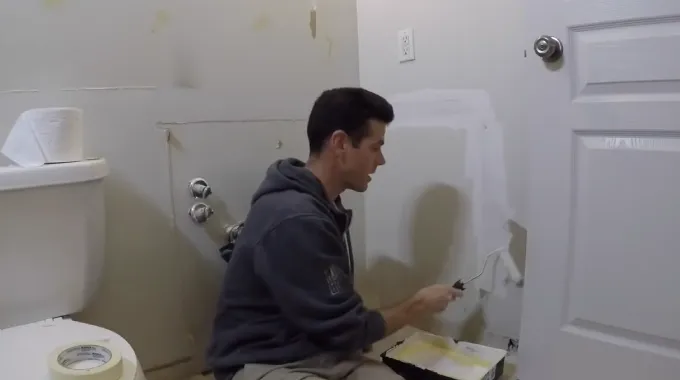Last Updated on March 21, 2023
Have you ever experienced the frustration of dealing with torn drywall paper? Whether it’s through accident, moisture damage or simple age-related degradation, there are plenty of ways to repair a damaged wall without having to replace it all. Get creative by seeing how far your brush can take you, just paint over it.
But if your walls have suffered any tear or rip, resist the urge to paint directly over them. A patch job is needed first if you don’t want things going from bad to worse. Also, crafting a masterpiece isn’t as simple as waving your brush around. You’ll need to prepare for the challenge, identify any risks and make sure you have all of the right materials.
Here, we’ll discuss what you need and how you can successfully revamp that wall into something truly special.
Repainting Over Torn Drywall Paper: Easy DIY Steps

When you know the right steps, painting your walls shouldn’t be a hassle. Here are some easy-to-follow instructions for painting over torn drywall paper:
Gather Necessary Materials and Tools:
- Putty Knife or Scraper Tool
- Sandpaper or Sanding Blocks
- Drywall Mud or Drywall Compound
- Primer/Sealer
- Painter’s Tape
- Rollers, Brushes, and Other Application Equipment (Depending on Size of the Area)
Step 1: Prepare the Surface Area
The first step is to properly prep your drywall surface to ensure you get that new paint job just right. This can be done by removing any pieces of torn drywall paper with a putty knife or scraper tool and then sanding down any uneven or rough areas.
After giving the surface a sleek makeover, do one last sweep to pick up any remaining grit and grime from sanding. To ensure a truly lasting bond between your wall and the new paint, clean it thoroughly before painting.
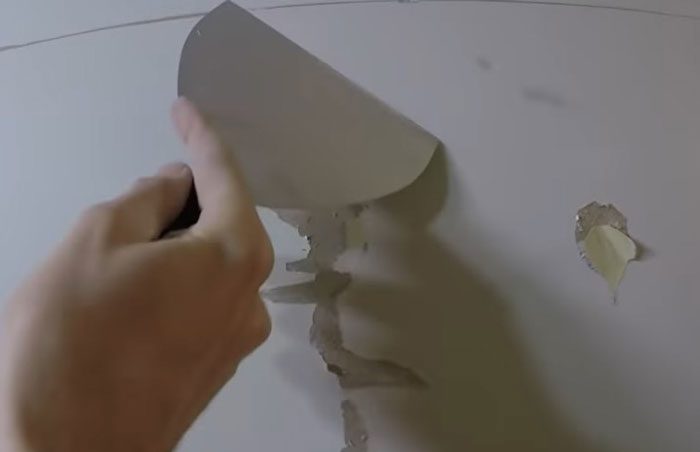
Step 2: Apply Primer/Sealer
Once the surface is ready, it is essential to apply primer/sealer to the area to provide an additional layer of protection against moisture and other elements. When applying the primer/sealer, it is important to cover any surrounding areas with drywall tape.
Of course, adequate ventilation should be ensured during both the preparation and painting processes to protect against inhaling any fumes. Also, before beginning the actual painting process, it is essential to allow enough time for everything applied thus far (primer/sealer) to dry completely.
Step 3: InspectWall for Damage (Holes, Cracks, etc.)
Before proceeding with painting, it is important to examine the wall for any damage, such as holes or cracks. This allows you to identify problem areas and address them accordingly before starting your paint job.
Using joint compound or spackle as needed will help create an even painting surface and reduce any further damage caused by these issues after applying paint onto them directly. Carefully smoothing out these compounds over affected areas will ensure they blend well into your finished product once painted over.
Step 4: Applying Base Coat Of Paint
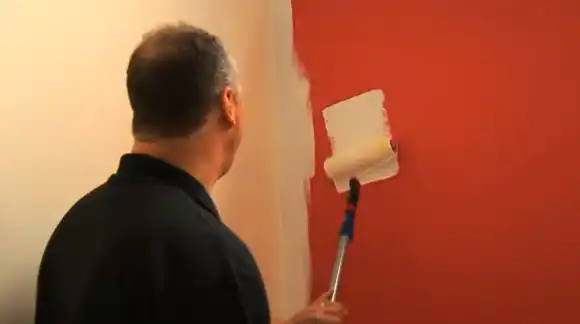
Proper technique is key when it comes to painting over torn drywall paper. Begin at the top of the wall and move downwards while rolling the paint in an up-down motion using even pressure. The first layer of paint should cover any existing wall damage that may have occurred due to deterioration over time.
In some cases where the damage is more pronounced, a second layer may be needed for full coverage. After applying each coat of paint, leave ample time to dry fully before moving on to the next step.
Step 5: Final Touches
To finish off this project successfully, some minor details must still be attended too. This includes removing painter’s tape from surrounding areas where edges have been marked off during preparation stages.
Inspecting walls once more for streaks or uneven spots, which might require touching up with an additional skim coating of paint here and there. Before finishing off with cleaning any excess materials from surfaces used throughout this process like rollers, brushes, etc.
Reasons Why Paint Peels Off From Drywall
Paint peeling off drywall is a common problem that can quickly make a home look outdated and shabby. Listed below are some common reasons why drywall paint peels off:
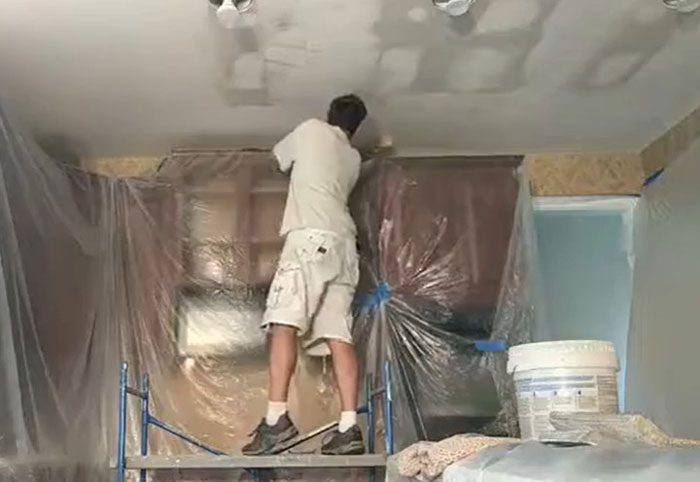
1. Poor Quality Drywall
Using drywall with low-quality materials contributes to paint peeling off. Because the material is not strong enough to support the weight of the paint, leading to a breakdown and flaking of the paint.
2. Inadequate Primer
If you don’t use a high-quality primer when painting your drywall surface, it can cause adhesion problems, leading to paint peeling off. This is especially true if you apply multiple layers of paint on top of each other without proper priming.
3. Moisture Build-Up
Paint can peel from drywall due to moisture build-up, as the changing temperatures and humidity levels create condensation on walls that can seep into the paint, causing it to break down and come apart.
4. Improperly Cleaned Surfaces
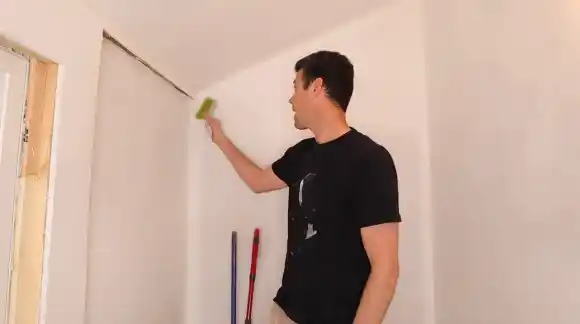
When preparing your drywall for painting, make sure you clean away any dust and dirt that may have accumulated over time. Leaving this debris will cause poor adhesion and make it more likely for the paint to peel off prematurely.
5. Too Many Coats
Applying too many coats of paint can put unnecessary strain on the drywall material, leading it to start buckling under its own weight and eventually chip or flake away. To avoid this problem, limit how much paint you apply so that you don’t overload your walls.
6. Poor Temperature Control
If your room has poor temperature control, then this can also contribute to peeling issues. Drastic changes in temperature can also cause wall surface expansion and contraction, making them weak and susceptible.
7. Wrong Paint Type Used
Using incorrect paint when trying to cover up drywall surfaces can lead to quick degradation due to chemical reactions. Which weakens adhesion qualities or creates discoloration in some cases due to different types of paints mixing together.
8. Poor Ventilation
A lack of ventilation within a given room or space where painted surfaces are present can significantly increase humidity levels over time. This causes condensation and moisture build-up, leading to paint peeling off from drywall.
Is It Necessary to Seal Torn Drywall Paper Before Painting?
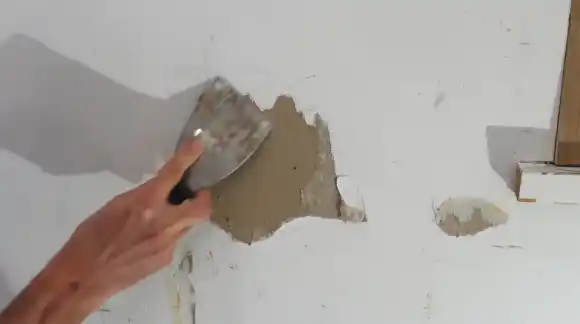
If you’re about to paint over drywall, make sure you seal those pesky tears in the paper – otherwise, your walls could end up with unsightly blisters. This is because latex paints contain moisture which will be absorbed into the gypsum surface of the drywall paper if left unsealed.
To seal the drywall paper, you should use a primer specifically designed for drywall surfaces, such as a water-based or latex-based primer. Make sure to follow the instructions mentioned above, and spread an even coat over the entire paper surface.
Allow it to dry fully before applying two coats of quality paint on top. Also, drywall paper that has rough surfaces may need to be sanded down before priming.
What are Some Recommended Primers for Torn Drywall Paper?
Pick up a quality primer to protect your drywall investment and ensure its longevity. This trusty tool helps secure the gypsum core from moisture, dust, and anything else Mother Nature (or whoever) throws at it.
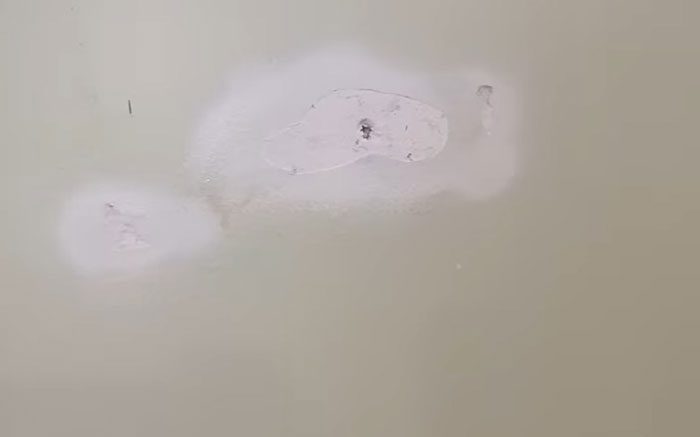
Here are some of the primers you can try:
Primer for Torn Drywall
It is a revolutionary product that helps you patch up and restore damaged drywall! This water-based primer comes with a unique no-run formula that won’t drip down walls. It also has an incredibly low VOC rating of fewer than 25 grams per liter, making it one of the most eco-friendly primers on the market.
Once applied, its transparent finish will create a slight residual tack that will help enhance the adhesion of paint or wallpaper to your wall.
Water-Based Problem Surface Primer
This Primer is a revolutionary product designed to make repairs and upgrades to drywall easier and more efficient. This low-odor water-based formula has a milky-blue/white tint and covers up to 450 sq ft with just one application.
It dries quickly to the touch within an hour, forming a clear, hard, flat finish that is ready for topcoat. Not only does it seal adhesive residue and protect drywall from tearing and blistering. This remarkable sealer also repairs torn paper on damaged drywall.
High Build Peel Bonding Primer
This exceptional bonding primer is an advanced, high-performing primer that provides superior protection against rust and mild tannin bleed. Its powerful formula protects surfaces from damage caused by mold and mildew as well, making them stay cleaner for longer periods of time.
The primer is easy to apply and can be applied in layers up to 20 mils wet for maximum coverage. The quick-drying formula makes it possible to topcoat within two hours of applying the primer. Clean-up is also made easy with just soap and water.
All Surface Primer
This powerful, water-based primer seals surfaces uniformly and adheres to them without sanding. With a quick drying time of just 35 minutes and ready to topcoat in 1 hour, this product is designed to save you time and money.
It offers excellent stain-blocking resistance, letting you use it with either oil or latex topcoats. Plus, its one-coat hide feature further improves coverage and saves you even more time on your project.
Covering Ripped Wallpaper: What Can Be Used?
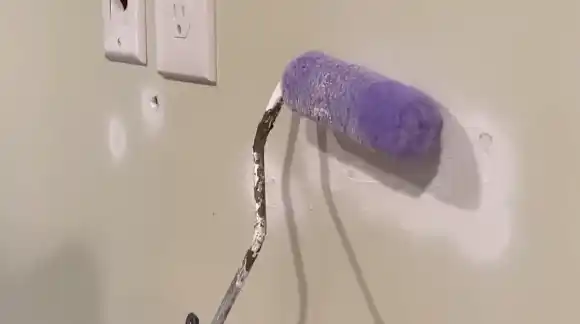
Wallpaper paste or ordinary wall filler is an excellent solution for covering ripped or torn pieces of wallpaper. To repair the damage, start by cleaning the area around the rip and removing any loose particles. Then, apply a thin layer of paste to the back of each piece that needs fixing, along with an appropriate amount to the wall itself.
Once everything is in place, press down firmly to ensure a strong bond. Allow the paste to dry completely before proceeding with additional steps such as painting or more complex drywall repair. Be sure to use the appropriate wallpaper paste or filler for your specific type of wallpaper.
Can Primer Be Applied Over Paint?
It is true a coat of primer can add a finishing touch to your freshly painted walls. Primer, which is essentially specialized paint, helps create a smooth and even surface, so you get the most out of that all-important final color.
It helps to seal in the existing paint, creates a better bond between the wall and the new paint, and provides an even skim coat for the topcoat.

When applying primer over existing paint, it’s best to use an acrylic-based primer since it won’t react with any chemicals in the other paints that may have been used previously. For best results, you should ensure that the old paint is thoroughly cleaned and any loose or flaking bits have been removed before priming.
Evaluate Damage Before Mending Your Torn Drywall
If drywall paper is torn, it’s best to first evaluate the full extent of the damage before deciding on the next steps. Depending on how significant and the type of repair needed, every situation requires its own unique treatment plan.
So whether you’re opting for a patch job or painting over the damaged area, make sure that a thorough assessment happens beforehand.
Whatever your budget or preference, there’s probably a solution that fits both. Just follow the above guidelines, and you’ll be on your way to having beautiful, pristine walls.
